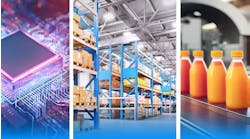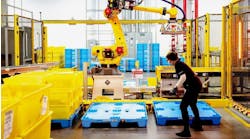The concept of industrial autonomy as the next evolutionary step beyond mere automation continues to gather momentum among leading suppliers of automation platforms, as Honeywell’s “journey to autonomous” vision recently joined Yokogawa’s “Industrial Automation to Industrial Autonomy (IA2IA)” roadmap for the future.
But there’s been considerable discussion the past several years about how the autonomous vehicle concepts we’ve all become familiar with in the context of self-driving cars translates to the theoretical “lights out” operation of a plant or factory. For instance, how do we even classify the transitions from automated to intelligently automated and ultimately to autonomous operations?
Many cars already are quite intelligent, for example, and have subsystems like automatic brakes that respond independently to unexpected but narrowly defined conditions. Indeed, the automotive industry has been adding intelligent systems that allow, for example, automated parallel parking, lane alerts, reactive cruise control and supervised, semi-autonomous highway driving. Meanwhile, the fully driverless car has been slower to arrive than many anticipated simply because of the far broader array of information about its surroundings that the fully driverless car must sense, understand and respond to.
And if one considers the even greater diversity of operational tasks that a refinery or automotive assembly line entails, then fully autonomous plant operations are even further into the future. We will, however, continue to take strides in that direction, realizing smarter and more semi-autonomous subsystems that allow human operators to focus on higher level tasks and allow our automation systems to control processes closer to optimum in response to a broader array of changing conditions and constraints.
In unveiling Honeywell’s industrial autonomous vision, Jason Urso, chief technology officer, argued that while increased autonomy is directionally correct, the primary goal isn’t eliminating human operators. Rather, it’s deploying technology that allows humans to make better decisions. Referencing autonomous cars, he noted that the main benefit isn’t getting by without a driver. Rather, it’s the safer, more predictable and efficient operation of cars that promises to save the 100 people who die every day in motor-vehicle accidents across the US. Further, driverless cars could substantially reduce the country’s $100 billion annual bill for medical care and productivity losses due to motor-vehicle crashes.
So, just as autonomous cars can help society reduce these liabilities, autonomy can similarly transform industry. “Sure, some operations will require fewer people,” Urso said. “But the real focus of industrial autonomous is on enhancing the senses of the people making decisions.”
“We’re leveraging technology to allow the system to take the optimal path, making room for human operators to performer higher-order tasks,” added Peter Davis, senior director of engineering, systems and HMI, Honeywell. This “elimination of the manual” would also address poorly tuned process models, for example, and allow automation to move the process closer to optimal even with changing conditions.
So, if the main benefit of moving toward autonomous cars is to save lives, then perhaps industrial autonomy’s chief legacy will be lower greenhouse-gas emissions from the sector that is most responsible for them. Industrial autonomy may still be a ways off, but the eversmarter systems along the way will contribute their own benefits.
By Keith Larson, editor at large


